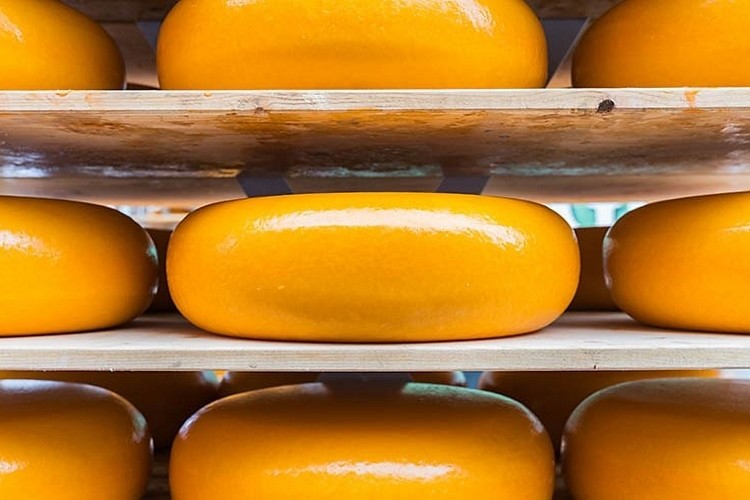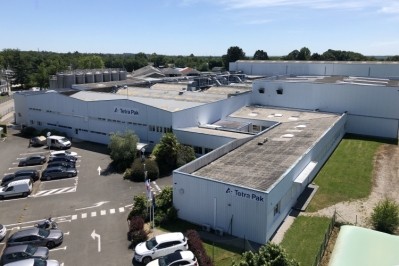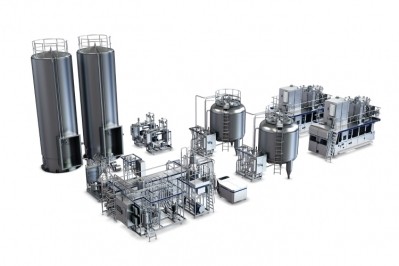Tetra Pak introduces 14 lines for cheese manufacturers

The other cheeses that will benefit from these BPLs include Mozzarella, semi-hard cheese, Cheddar, and fresh cheese production. Together, these cheese types make up 79% of all cheese volumes and have a CAGR forecast of 3% (2021-2025). Two of the new lines (Mozzarella and Cheddar) were recently previewed at the Global CheeseExpo (April 6 to 8).
Tetra Pak said the new BPL concepts provide a complete production solution for customers, optimized to fit their needs. The processing lines create a safe and easy route to profitable cheese production with a higher yield, while incorporating the traditional cheesemaking techniques, the company said. The hygienic production process enables a longer product shelf life, as well as consistent and replicable quality. Sustainability is also a factor, with solutions focusing on reducing water, steam, and power consumption.
Fred Griemsmann, vice president cheese & powder systems at Tetra Pak said, “Cheese is consumed on every continent around the world, and consumer appeal shows no signs of abating. In fact, it’s quite the opposite.
“We’ve expanded and deepened our expertise and knowledge over the last decade, consolidated our proficiency and sites in the US, and recently invested €25m ($30m) to create a world-class cheese production center in Poland. With 50 years of expertise, we are the only supplier for complete solutions from milk intake, cheese production, through to packaging.
“This provides us with a sophisticated toolkit that enables us to tailor solutions to be completely suited to the customers’ needs, and we are so confident in these new Best Practice Line solutions that they come with performance guarantees.”
The most popular cheese is yellow cheese, accounting for a 34% share of the global cheese volume, and includes both hard and semi-hard cheese varieties. The Tetra Pak draining belt portfolio provides continuous production of fused and stirred Cheddar and Pasta Filata cheese types. These enclosed belt systems are designed to automatically drain, acidify and texture, mill, salt and mellow cheese curd, similar to the traditional cheese method. Fines from whey are captured by a fines saver screen integrated in the belt machine for maximizing yield. This allows for consistent curd production resulting in uniform acidity, moisture, salt concentration and loading rate, Tetra Pak said.
The second most popular cheese category is Mozzarella. With a focus on yield improvement, product quality, and reduced environmental impact, the Tetra Pak Cooker Stretcher DDA dry cooker uses a (patented) heated auger and dimpled heated jacket technology to heat the product indirectly, resulting in higher fat retention in the final product. Employing nine independent heating zones with integrated ingredient addition capabilities, the company said it offers producers control of the cooking process.
For draining and forming systems, the Tetra Pak Blockformer system - where curd is compacted in a series of vacuum and pressure relief cycles - employs a design enabling it to run Parmesan cheese as well as Cheddar cheese. Meanwhile, Tetra Pak Casomatic systems drain and form semi-hard cheese and promote whey production. These systems maximize yield with a controlled process that eliminates weight and moisture variations in the final cheese product. The hygienic design enables long production runs and short cleaning cycles to optimize uptime.
Covid-19 has shifted consumer behaviors, with 36% of consumers saying they have significantly increased their intake of cheese throughout the global pandemic. This is due, in part, to the fact that we are spending more time at home, providing us with increased opportunities to eat cheese, such as when watching TV (36%), with a drink (35%) or as a quick lunch (35%).
Tetra Pak added 56% of people surveyed said cheese is healthy, nutritious (51%) and high in protein (42%) and calcium (41%).
The company also said 77% expressed interest in the process of cheese production, specifically the ingredients and where they are from (72%), and where the product is made (52%), while 36% also value environmentally-friendly packaging.
Griemsmann said, “Cheese has been an essential part of our diet for centuries and it is set to remain so for many years to come. People are becoming more adventurous in terms of taste and texture, and we have the facility to accommodate this, ensuring that there is no compromise on the overall quality of the end result.”







